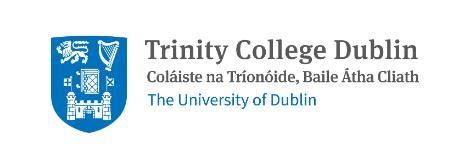Discipline of Geology hosts IGRM25.
When: 28th February to 2nd March 2025.
Where: Trinity College Dublin (Edmund Burke theatre and adjacent concourse)
For Full Event Programme click: IGRM 2025 Programme
For Abstracts Booklet click: IGRM 2025 Abstracts Booklet
Guest Speakers
Friday 28th February:
Prof Gavin Foster, University of Southampton
Title: Past, Present and Future of Stable Isotopes in Palaeoclimate
The measurement of the stable oxygen isotope composition of marine carbonates such as foraminifera has underpinned the study of ancient climates for over 75 years since Nobel laureate Harold Urey “…suddenly found [himself] with a geologic thermometer…” in 1948. Since then, advances in mass spectrometry technologies, hand in hand with the establishment of deep ocean drilling, have not only led to foraminiferal oxygen isotopes becoming the workhorse of modern palaeoclimatology, but have also enabled us to describe the climate of the past 65 million years (and beyond) in exquisite detail. Foraminiferal carbonates contain a number other major elements and impurities and it seems that as soon as methods are developed to measure the stable isotopic composition of these elements they are applied by ingenious palaeoclimatologists to study the climate of our past. One element present in parts per million level in the shells of foraminifera that is proving particularly useful is boron, which has two stable isotopes 11B and 10B first measured in foraminifera in 1991. It was quickly recognised that the ratio of 11B/10B in marine carbonates was a close function of the pH of the seawater in which the foraminifera lived. Since surface water pH is in turn tightly related to the CO2 content of the atmosphere this gave palaeoclimatologist a means to reconstruct CO2 back in time – way beyond the reach of the gas bubbles trapped in Antarctic ice cores. We now have a palaeo-CO2 record from boron isotopes in foraminifera stretching back 65 million years consisting of >700 analyses. By marrying this CO2 record with climate records from oxygen isotopes and other methods, we have been able to not only test the climate models used to predict our changing future but can also constrain the sensitivity of natural climate change to CO2. Both these provide vital constraints on the causes of past climate change and also help narrow the uncertainties in our projections of anthropogenic climate change. Advances in mass spectrometry continue at pace and the determination of the boron isotopic composition of single foraminifera has become possible in the last couple of years using laser ablation methods. This allows an unprecedented picture of ancient climate but is of course not without its challenges.
In this talk I will outline how we got to where we are today in terms of stable isotope geochemistry and conclude with presenting some of my groups latest research on single foraminiferal boron isotopes, showcasing a new way to study the climate of our past.
Saturday 1st March:
Conference Meals
Please note that lunch is not included as part of this event, however there are many options within walking distance of the event venue.
There will be a conference dinner held on the Saturday evening in the Harbourmaster.
Cost will be €65 per person. Booking via the registration form is now closed, however it is still possible to attend the meal, please email IGRM@tcd.ie with your name and any dietary requirements. We prefer payment via the Paypal link below, however it will also be possible to pay by cash at the Registration desk.
Organising Committee
David Chew, Quentin Crowley, Gerald Dickens, Chris Nicholas, Emma Tomlinson.
The 68th IGRM has been organised by:
Discipline of Geology, Trinity College Dublin, The University of Dublin.

Our Sponsors
The 68th IGRM is supported by:









Contact:
For further information or if you have any queries, please contact IGRM@tcd.ie
IGRM Code of Conduct: IGRM Code of Conduct
